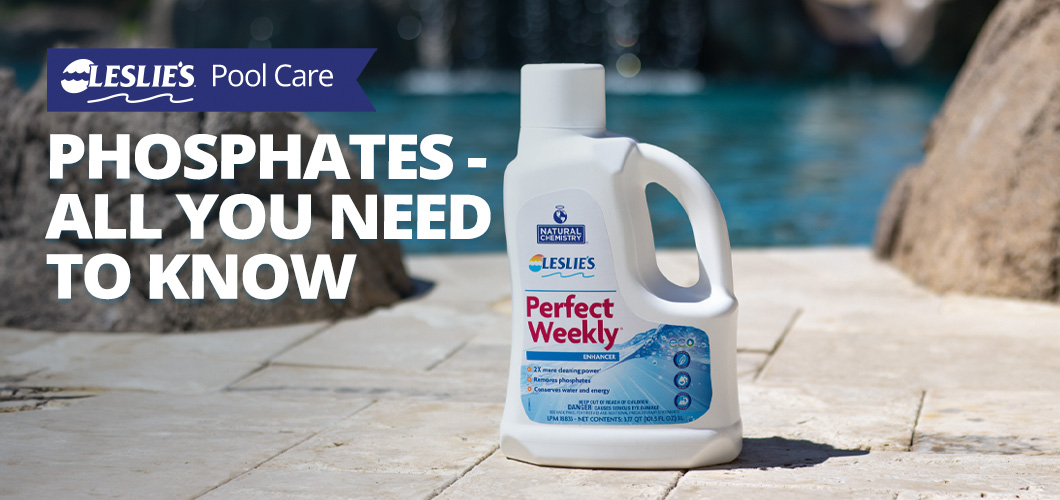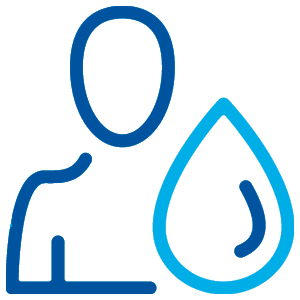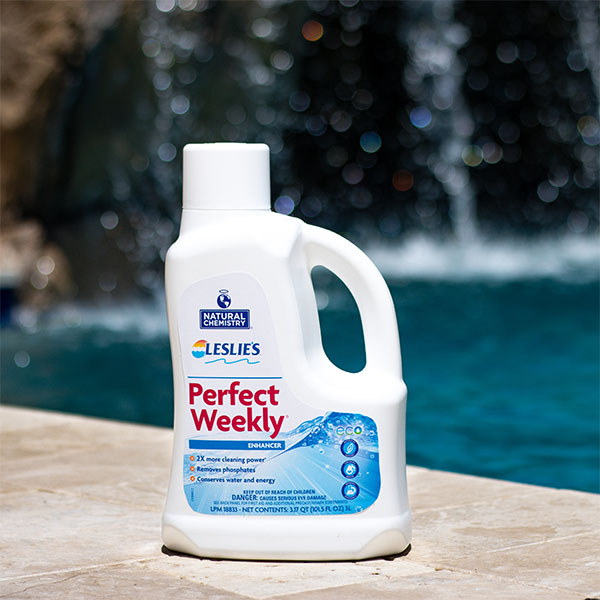
Phosphates - All You Need To Know
Phosphates and organics are a pool's #1 enemy. Phosphates are plant nutrients that can also be a pollutant. To thrive, algae depends on phosphates. The higher the level of phosphates present in water, the greater the risk of algae growth. Phosphate levels dictate how fast the algae can bloom. And this can create a nightmare situation for pool owners.
How Do Phosphates Get into the Pool?

Phosphate sources include:
- Fertilizers
- Dead skin
- Plant debris
- Dead bacteria
- Dead algae
- Body fluids
- Rainwater
- Soil
- Pool chemicals (certain sequestering agents)
- Fill or source water
- Bird droppings (especially ducks)
Phosphates contribute to algae blooms
The best preventative approach to correct the root cause of algae growth is to eliminate phosphates. The removal of phosphates in products such as laundry detergents, soaps and dishwasher detergents in North America has helped prevent algae overgrowth in lakes and rivers. In swimming pools, we can do the same thing by adding NoPHOS. This product will reduce phosphate levels in the water easily and effectively to near-zero without disturbing the appropriate chemical balance in pool water. At these levels, the nutrient-starved algae are easily controlled with normal sanitation. Use NoPHOS if the phosphate level is higher than 300 ppb (parts per billion) once the phosphate level has been reduced to under 100 ppb, use Perfect Weekly to maintain it.
Phosphates - Dos and Don'ts
DO: Use NoPHOS with any sanitizer system including Chlorine, Bromine, Mineral systems, Ionizers, Biguanides (Baquacil, Aqua Silk, etc.) and Salt Systems.
DON'T: Add more than the recommended amount at one time.
DO: Use our NoPHOS with any filter media: sand, D.E. and cartridge.
DON'T: Add to a pool with live algae or a pool that is not clean or balanced.
DO: Swim immediately after applying NoPHOS. It is gentle on the skin, non-toxic, and safe for the environment.
DO: Shake NoPHOS prior to adding to pool water.
DON'T: Add with a dirty filter.
How to Test for Phosphates
It's easy! We recommend using a Phosphate Test Kit for a quick and accurate reading of the phosphate level in your pool water. By using a test kit, like Natural Chemistry phosphate test strips, you'll know the phosphate level in your pool water within seconds! You can also bring your pool water to any Leslie's Pool Supplies locations for a FREE 10-Point AccuBlue® Water Test.
What Are Organics?

Organics or organic contaminants come from a variety of sources such as:
- Sweat
- Shampoo
- Body oils
- Cosmetics
- Hair products
- Lotions
- Bodily fluids
- Deodorant
- Plant matter
- Bird droppings
- Pollen
- Pollution
Some of these are the same sources that produce phosphates. The organics are those that can be broken down by enzymes, which reduces the amount of phosphates they produce.
Why we don’t want organics in pool water?
There are 4 main reasons we DO NOT want excessive organic build-up in our pool or spa. Organic contaminants cause:
- Waterline oil rings and clogged filters.
- Build up in the plumbing lines and fittings.
- Pool water quality issues and odors.
- High sanitizer demand.
How to Remove Organics from a Pool or Spa

Here are some simple tips to prevent and remove organic material from creating a mess in your swimming pool or spa.
- Go back to the basics and ensure there is efficient water circulation and filtration for the proper amount of time (8-12 hours per day).
- Continue to sanitize the water on a daily basis.
- Shock once a week to ensure chlorine efficiency.
- Brush and vacuum the pool every week.
- Encourage swimmers to shower before getting into the pool.
- Add an enzyme product like Leslie's Perfect Weekly.
Traditionally, people have relied solely on chemicals to maintain their pools and spas. Sanitizers have been responsible for two functions: killing germs and other living organisms, and oxidizing organic material from the pool/spa water. “Organic material” including the non-living organics, can be eliminated with one of nature’s own biochemical wonders; the enzyme. Combined with non-living organics, enzymes take on and eliminate the organic workload for the sanitizer. By reducing organics, the sanitizer will be more effective at what it is supposed to do; kill germs and other living organisms.
Natural enzymes, like Leslie’s Perfect Weekly, work by biodegrading the organics in the pool water, actually breaking them down into their original building blocks, such as carbon dioxide and water, which are essentially, reabsorbed back into the pool or spa water.
Enzymes - Dos and Don'ts
DO: Use our enzyme product Perfect Weekly with any sanitizer system including Chlorine, Bromine, Mineral systems, ionizers, Biguanides (Baquacil, Aqua Silk, etc.) and Salt Systems
DON'T: Apply enzymes when adding sanitizers or shocks, enzymes dislike chlorine over 5 ppm. If you add over 5 ppm of chlorine, foaming will appear as the sanitizer is attacking the enzymes instead of sanitizing.
DO: Use enzymes with any filter media: sand, D.E., and cartridge.
DON'T: Store enzymes in temperatures over 120 °F or in direct sunlight, etc. This causes the enzyme concentration to reduce considerably.
DO: Swim or soak immediately after applying our enzymes.
DON'T: Use more than the recommended dose.
DO: Reduce the use of clarifiers, tile, vinyl, and filter cleaners. Enzymes will safety and effectively reduce these products without putting any unwanted bi-products in your pool and spa water.
DO: Test before shocking or adding additional sanitizers.
DO: Clear up problem pools fast with Clear Aid.
DO: Use our enzymes to help in the prevention of water mold.